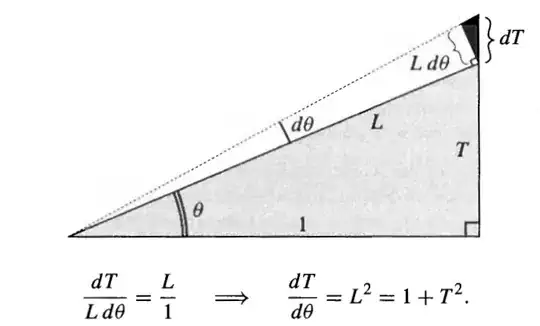I started to flick through Needham's Visual Complex Analysis and pretty much fell on my face in the first exercise.
On page ix, he shows a proof that $dT/d\Theta = 1 + T^2$ if $T = tan(\Theta)$.
He does so by comparing the black triangle with the initial triangle (grey). What I don't understand is why the length of the one segment is $L*d\Theta$. I'm sure I'm lacking some basic math here.....
Shouldn't the length be $L*tan(d\Theta)$ (which obviously would be less helpful)?
